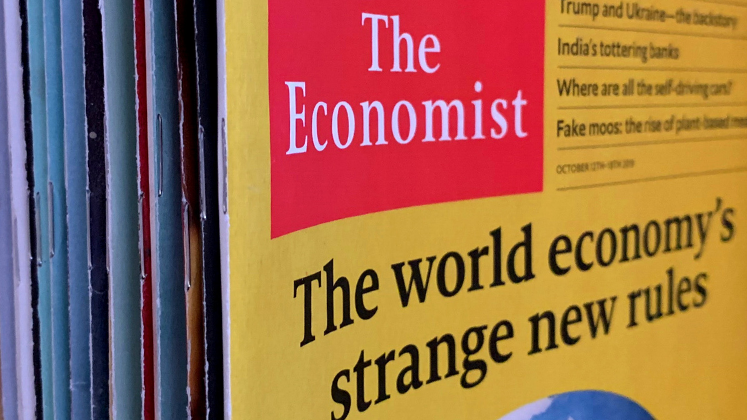 Higher education rankings do not necessarily reflect what users think they represent, discusses Ellen Hazelkorn in her recent book, reviewed by Andreea Moise.
Higher education rankings do not necessarily reflect what users think they represent, discusses Ellen Hazelkorn in her recent book, reviewed by Andreea Moise.
Rankings and the Reshaping of Higher Education: The Battle for Excellence. Ellen Hazelkorn. Palgrave MacMillan. March 2011.
What started as a small academic exercise in the US in the early 20th century has grown steadily to the scores of national and global university ranking systems that today’s students, tutors, administrators, and Vice Chancellors the world over have come to obsess about. Rankings and the Reshaping of Higher Education: The Battle for Excellence picks apart the creation and progression of higher education rankings, using data from interviews and questionnaires conducted with Presidents, Vice Chancellors, senior administrators, students, stakeholders, policy makers, student leaders and trade unionists to discuss how these rankings impact the higher education sector, influence institutional decision making, and affect government policymaking.
The author, Ellen Hazelkorn, is Director of Research and Enterprise at the Dublin Institute of Technology, and currently leads an international research project on the Impact and Influence of League Tables and Ranking Systems on Higher Education Decision-Making and Academic Behaviour, making her well placed to explore the topic. Hazelkorn argues, somewhat unsurprisingly, that the overall impact of rankings is multifaceted, both positive and perverse, and presents measured evidence to support both possibilities.
 Undoubtedly, rankings and impact assessments are reshaping higher education and wider education systems, providing the general public with accessible information on their chosen universities, and giving Ministers the power to identify lagging institutions. In response, universities have become more professionally and strategically organised, there is greater focus on quality and performance, and on producing high-quality evidence to support claims of excellence.
Undoubtedly, rankings and impact assessments are reshaping higher education and wider education systems, providing the general public with accessible information on their chosen universities, and giving Ministers the power to identify lagging institutions. In response, universities have become more professionally and strategically organised, there is greater focus on quality and performance, and on producing high-quality evidence to support claims of excellence.
Hazelkorn first looks at the positive or beneficial impact that rankings can have for universities, which will be familiar to readers working in the higher education sector. Focusing on the impact on student recruitment, the author highlights how students associate high rankings with higher education quality and better career prospects. The higher the university rank, the higher the academic quality of students apply, leading to higher degree results, higher rankings, improved reputation, and so on, meaning that universities ranked at the top of league tables continue to profit from their place.
“I sat and I thought about what the main worry for students is when they are coming to university and when they are leaving, and I think it’s all about a university’s reputation”
(Will Bickford Smith, Education Officer at the University of Nottingham)
Rising rankings can certainly help to build a university’s reputation nationally and globally, underpinning its marketing and branding, and encouraging investment and philanthropy into the millions. International experience shows that high rankings also inform strategic thinking and planning, and can help to identify potential partners for project and article collaborations. Harvard University, which regular tops rankings including the THE 2011-2012, received $596.96 million in donations in 2010, the second highest amount received by aUS university.
Hazelkorn then identifies three key policy trends that higher education rankings can influence: accountability and transparency, internationalization and the “battle for talent”, and world class excellence. Rankings have led to a proliferation of accountability or transparency strategies by which to measure return of investment and value for money. In many instances, governments have directly adopted the indicators used by rankings into their own performance measurements or used rankings to set targets for system restructuring and allocating funds. Internationalisation is no longer simply an instrument of cultural exchange but an indicator of the attractiveness of nations and institutions. Countries such as China, Korea, Singapore and India are investing heavily in the expansion of their HE systems to construct their own world-class universities to act as beacons for investment and talent.
In contrast to these beneficial qualities, Hazelkorn discusses the potential deficiencies associated with higher education rankings, which again many readers may be familiar with. Hazelkorn acknowledges that it is very tricky to rank institutions of different nature, structure and mission. Measuring the breadth of higher educational activity – which includes account teaching and learning, the ‘added value’ that each HEI contributes to the student’s learning, research productivity and its impact, knowledge and the technology transfer activities, engagement and third mission, and social and economic impact – and comparing universities from all over the world, of differing age and outlook, is extremely complex.
Secondly, measurements are rarely direct but consist of proxies. Two inter-related problems arise with the use of proxies: the choice of the proxy and whether the indicator itself is a worthy and appropriate measurement. For instance, student entry scores are often used to assess the quality of the student, but this may not be an appropriate indicator to measure the quality of the educational experience.
Additionally, a university’s position can change considerably depending upon the weight ascribed to a particular criterion. This leads to inconsistency across rankings but it also highlights the arbitrariness of the weightings. For example bibliometric and citation data privileges the bio-sciences, an advantage further augmented by using journal impact factors. In the case of ARWU, using articles published in Nature and Science as the benchmark of faculty quality, the LSE and universities focused on the social sciences lost out as bibliometric methodology cannot adequately and completely include the social sciences.
What we can conclude is that rankings do not necessarily reflect what users think they represent. Some students look a little harder at league tables when deciding where to put their student fees, but for many the whirlwind of trying to get a place coupled with the complexity of the numbers behind the rankings, will simply be too much. The same is true for donors and investors who may rush to place their money with institutions high on the rankings to ensure a good return, but for those universities stuck in a cycle of disadvantage at the opposite end of the spectrum, their situation will not be ameliorated any time soon.
The book makes an important contribution to the understanding of the rankings phenomenon and ultimately stresses that the choice of indicators is crucial and needs to be considered in tandem with their consequences.
Rankings and the Reshaping of Higher Education: The Battle for Excellence. Ellen Hazelkorn. Palgrave MacMillan. March 2011.
Find this book: ![]() Google Books
Google Books ![]() Amazon
Amazon ![]() LSE Library
LSE Library







